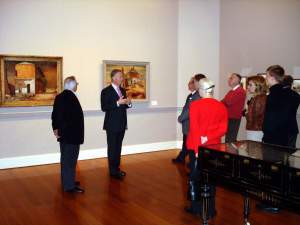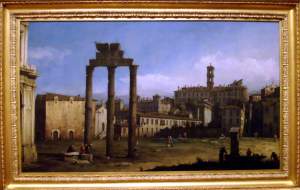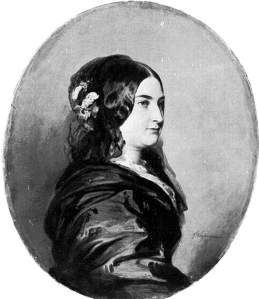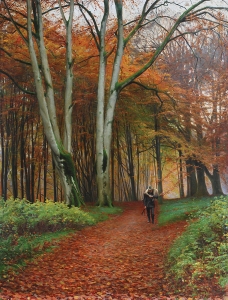 Wednesday, 11 May 2011
Wednesday, 11 May 2011
Portraits @ Leonard Joel May 2011 Sunday Art Auction
As always, a quick overview of portraits that were offered at recent art sales. Because of the all-inclusive nature of Leonard Joel’s auctions (as discussed in the previous post), their sales are perhaps the best places to view and find a wide variety of portraits by local and international artists offered on the Australian art market.
 While the cross-section of portraits was more exciting in some of their previous offers, the May 2011 Sunday Art Auction also unearthed some interesting, unusual and unexpected items, perhaps none more so than Ernst Buckmaster’s self-portrait from 1926, painted when the artist was in his late 20s. Buckmaster shows himself in a flattering three-quarter turn against an abstracted background; his face boldly lit from the left-hand side, emphasising the shock of bushy black hair, deep-set eyes, prominent nose and chin, and a slightly haughty expression about his mouth and brow. There is something indelibly Edwardian about this self-representation, clearly emulating the bravura style of John Singer Sargent. One has to love the artifice of the portrait, where the artist chose to represent himself standing in a simple painter’s smock, which covers a formal black-tie dress complete with a bowtie and starched collar, as if the artist presages the popular success he would achieve later in life as a fashionable landscape and still-life painter. Estimated at $2,000-$4,000, the portrait sold for $6,600 (IBP).
While the cross-section of portraits was more exciting in some of their previous offers, the May 2011 Sunday Art Auction also unearthed some interesting, unusual and unexpected items, perhaps none more so than Ernst Buckmaster’s self-portrait from 1926, painted when the artist was in his late 20s. Buckmaster shows himself in a flattering three-quarter turn against an abstracted background; his face boldly lit from the left-hand side, emphasising the shock of bushy black hair, deep-set eyes, prominent nose and chin, and a slightly haughty expression about his mouth and brow. There is something indelibly Edwardian about this self-representation, clearly emulating the bravura style of John Singer Sargent. One has to love the artifice of the portrait, where the artist chose to represent himself standing in a simple painter’s smock, which covers a formal black-tie dress complete with a bowtie and starched collar, as if the artist presages the popular success he would achieve later in life as a fashionable landscape and still-life painter. Estimated at $2,000-$4,000, the portrait sold for $6,600 (IBP).
 It is interesting to compare this work to a portrait of the same sitter by Jean Sutherland, obviously painted much later, but displaying the same slightly arrogant and self-assured arching of the brow (sold here en suite with Sutherland’s self-portrait, est. $800-$1,200); or indeed against another self-portrait in the auction, that of Douglas Watson of 1945, who also dashingly portrayed himself with a cigarette in his hand and sporting Hollywood mustachios (est $1,000-$1,500; unsold).
It is interesting to compare this work to a portrait of the same sitter by Jean Sutherland, obviously painted much later, but displaying the same slightly arrogant and self-assured arching of the brow (sold here en suite with Sutherland’s self-portrait, est. $800-$1,200); or indeed against another self-portrait in the auction, that of Douglas Watson of 1945, who also dashingly portrayed himself with a cigarette in his hand and sporting Hollywood mustachios (est $1,000-$1,500; unsold).
 Perhaps my favourite portrait in the auction has to be a charming and lively study by Rupert Bunny of his wife and muse, Jeanne Morel. Painted c. 1895, the portrait predates some of Bunny’s better known, lavish full-length representations of his wife, many of which appeared at the last year’s retrospective of the artist (and discussed within these pages in a number of earlier posts). The portrait depicts Jeanne boldly in clear and sharp profile, lost in an intent conversation with an invisible interlocutor. The liveliness and immediacy of the image has something of an amazing snap-shot quality to it one would normally associate with a photograph rather than a drawing. Her face is executed in beautiful detail, while her dress is but a hint, a suggestion of folds and outlines of puffed sleeves and a late-Victorian bodice. There are echoes of Sargent’s celebrated portrait of Lady Agnew of Lochnaw, painted a few years previously in 1892-93, especially in the way Jeanne Morel holds on to the side of the chair with her hand. It is undoubtedly one of the loveliest and surprisingly fresh watercolour portraits I’ve seen by the artist in a long time, and the public must have thought as highly of it as I did: estimated at $3,000-$4,000, the portrait drawing sold for $13,200 IBP, more than four times its lower estimate.
Perhaps my favourite portrait in the auction has to be a charming and lively study by Rupert Bunny of his wife and muse, Jeanne Morel. Painted c. 1895, the portrait predates some of Bunny’s better known, lavish full-length representations of his wife, many of which appeared at the last year’s retrospective of the artist (and discussed within these pages in a number of earlier posts). The portrait depicts Jeanne boldly in clear and sharp profile, lost in an intent conversation with an invisible interlocutor. The liveliness and immediacy of the image has something of an amazing snap-shot quality to it one would normally associate with a photograph rather than a drawing. Her face is executed in beautiful detail, while her dress is but a hint, a suggestion of folds and outlines of puffed sleeves and a late-Victorian bodice. There are echoes of Sargent’s celebrated portrait of Lady Agnew of Lochnaw, painted a few years previously in 1892-93, especially in the way Jeanne Morel holds on to the side of the chair with her hand. It is undoubtedly one of the loveliest and surprisingly fresh watercolour portraits I’ve seen by the artist in a long time, and the public must have thought as highly of it as I did: estimated at $3,000-$4,000, the portrait drawing sold for $13,200 IBP, more than four times its lower estimate.
 Other portraits on offer included Tony Tuckson’s Matisse-esque interpretation of his wife, Margaret, from the early to mid 1950s (est. $16,000-$20,000, sold $28,800 IBP); David Rankin’s ghostly evocation of his wife, writer Lily Brett, of 1986 (est $1,000-$2,000, sold $2,400 IBP); a rather dashing representation of Violet Teague’s husband (?), Roger Teague, in full riding habit (est $3,000-$5,000, unsold); and a fresh and vibrantly painted portrait of an unknown lady by Archibald Douglas Colquhoun (est. $700-$900, unsold).
Other portraits on offer included Tony Tuckson’s Matisse-esque interpretation of his wife, Margaret, from the early to mid 1950s (est. $16,000-$20,000, sold $28,800 IBP); David Rankin’s ghostly evocation of his wife, writer Lily Brett, of 1986 (est $1,000-$2,000, sold $2,400 IBP); a rather dashing representation of Violet Teague’s husband (?), Roger Teague, in full riding habit (est $3,000-$5,000, unsold); and a fresh and vibrantly painted portrait of an unknown lady by Archibald Douglas Colquhoun (est. $700-$900, unsold).
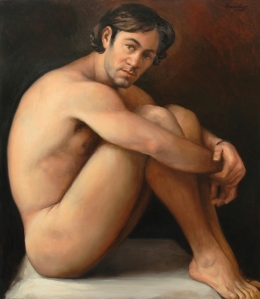 Norman Lindsay’s oil Rita of c. 1940s made yet another appearance on the auction block (est. $20,000-$30,000; sold $24,000 IBP); and there was also a lively profile portrait drawing of the same model (est. $1,000-$2,000, sold $3,360 IBP). And since we’re admitting identifiable models into the sphere of portraiture, we can’t go past Peter Churcher’s generously proportioned male nude, Simon Seated, which is unfortunately not the most felicitous creation by this otherwise talented artist (est. $7,000-$9,000, unsold).
Norman Lindsay’s oil Rita of c. 1940s made yet another appearance on the auction block (est. $20,000-$30,000; sold $24,000 IBP); and there was also a lively profile portrait drawing of the same model (est. $1,000-$2,000, sold $3,360 IBP). And since we’re admitting identifiable models into the sphere of portraiture, we can’t go past Peter Churcher’s generously proportioned male nude, Simon Seated, which is unfortunately not the most felicitous creation by this otherwise talented artist (est. $7,000-$9,000, unsold).
 As always, there was also a selection of what one of the former auctioneers of this house inspiringly termed ‘instant ancestors’ – portraits of unknown, soberly dressed ladies and gentlemen gazing at the viewer from the 18th and 19th Century canvasses, such as an unknown gentleman by an early 19th-C. British school (est. $1,000-$2,000, unsold); or a copy after George Romney’s portrait of John Askew of Whitehaven, c. 1800 (est. $2,000-$3,000, unsold). Perhaps the most attractive and romantic of the lot is an 18th-C. Portrait of a Lady by the Swiss François Ferriere, dating from 1786, in full powdered wig and beautifully executed gauze wrap around her shoulders; the lightness of the face, hair, and bodice effectively silhouetted against the overall darkness of the background (est $800-$1,200; sold $1,140 IBP).
As always, there was also a selection of what one of the former auctioneers of this house inspiringly termed ‘instant ancestors’ – portraits of unknown, soberly dressed ladies and gentlemen gazing at the viewer from the 18th and 19th Century canvasses, such as an unknown gentleman by an early 19th-C. British school (est. $1,000-$2,000, unsold); or a copy after George Romney’s portrait of John Askew of Whitehaven, c. 1800 (est. $2,000-$3,000, unsold). Perhaps the most attractive and romantic of the lot is an 18th-C. Portrait of a Lady by the Swiss François Ferriere, dating from 1786, in full powdered wig and beautifully executed gauze wrap around her shoulders; the lightness of the face, hair, and bodice effectively silhouetted against the overall darkness of the background (est $800-$1,200; sold $1,140 IBP).
This selection shows that portraiture, both as a genre and an area of collecting, continues to fare alive and well in Australia; and it is thanks to the auctions like these that we see gems, rarities, and surprises like those by Bunny, Buckmaster, or Ferriere emerging from the confines of private Australian collections to find new homes, sometimes with surprising (and profitable!) results for their former owners.
[© Eugene Barilo von Reisberg 2011. This article is copyright, but full or partial use is WELCOME with the full and proper acknowledgment]


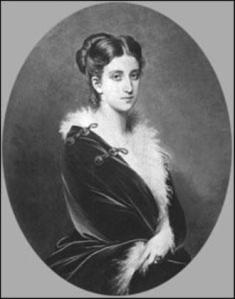




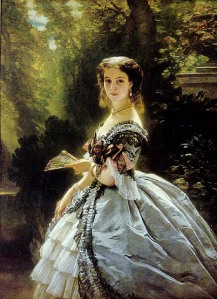
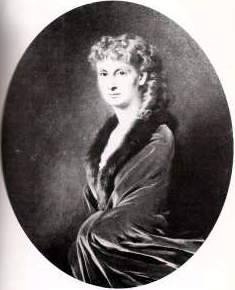



 Furthermore, no chroniclers or biographers of Princesse Mathilde mention her sitting to Winterhalter, which corresponds with the alleged animosity between the Princesse and Eugénie, Empress of the French (1826-1920), who was among Winterhalter’s premier patrons; neither is the portrait reproduced in any publications, past or present, on the Princesse. Last but not least, even with Winterhalter’s well-known propensity for the admissible degree of flattery and idealisation, the lady in the portrait looks to be in her fifties or early sixties. Princesse Mathilde Bonaparte was in her late forties, and while every artist who painted her subjugated the Princesse’s visage to his own aesthetic ideal, the subtle mimetic differences are also apparent, especially in the shorter oval of the face and a more pronounced jaw line.
Furthermore, no chroniclers or biographers of Princesse Mathilde mention her sitting to Winterhalter, which corresponds with the alleged animosity between the Princesse and Eugénie, Empress of the French (1826-1920), who was among Winterhalter’s premier patrons; neither is the portrait reproduced in any publications, past or present, on the Princesse. Last but not least, even with Winterhalter’s well-known propensity for the admissible degree of flattery and idealisation, the lady in the portrait looks to be in her fifties or early sixties. Princesse Mathilde Bonaparte was in her late forties, and while every artist who painted her subjugated the Princesse’s visage to his own aesthetic ideal, the subtle mimetic differences are also apparent, especially in the shorter oval of the face and a more pronounced jaw line. These observations initiated a research into other Demidov women who were alive and in their fifties or sixties in the late 1860s. One of them stood out most prominently: Eva Aurora Charlotta Stjernvall (1808-1902), more commonly known under her Russian name as Avrora Karlovna Stjernvall [Аврора Карловна Шернваль], who married Pavel Nikolaevich Demidov [Демидов] (1798-1840), and upon becoming a widow, she married secondly Andrei Nikolaevich Karamzin [Карамзин] (1814-54). After her second widowhood, Avrora Karlovna continued to be commonly referred to by her first husband’s name. Through her first husband, who was Anatoly Demidov’s brother, she was Princesse Mathilde’s sister-in-law; and her son, Paul (1839-1885), inherited his uncle’s illustrious princely title. On the other hand, neither Avrora nor her late husband, Pavel Demidov, had a title of nobility. Therefore, both the portrait and the entry on Wild’s list correspond more accurately as a portrait of Avrora Karlovna as a simple Mme Demidoff; who was also turning 60 at the time the portrait was painted.
These observations initiated a research into other Demidov women who were alive and in their fifties or sixties in the late 1860s. One of them stood out most prominently: Eva Aurora Charlotta Stjernvall (1808-1902), more commonly known under her Russian name as Avrora Karlovna Stjernvall [Аврора Карловна Шернваль], who married Pavel Nikolaevich Demidov [Демидов] (1798-1840), and upon becoming a widow, she married secondly Andrei Nikolaevich Karamzin [Карамзин] (1814-54). After her second widowhood, Avrora Karlovna continued to be commonly referred to by her first husband’s name. Through her first husband, who was Anatoly Demidov’s brother, she was Princesse Mathilde’s sister-in-law; and her son, Paul (1839-1885), inherited his uncle’s illustrious princely title. On the other hand, neither Avrora nor her late husband, Pavel Demidov, had a title of nobility. Therefore, both the portrait and the entry on Wild’s list correspond more accurately as a portrait of Avrora Karlovna as a simple Mme Demidoff; who was also turning 60 at the time the portrait was painted.


